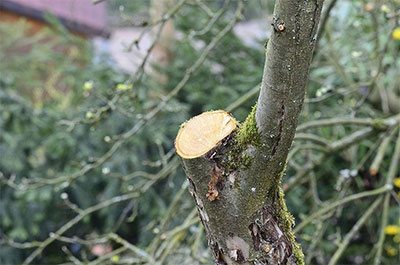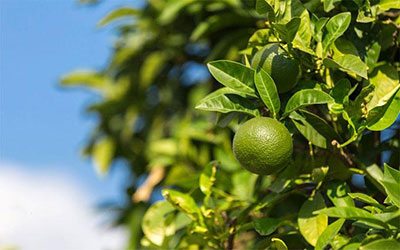Do you want to know how to prune a lime tree so it can grow healthily? If so, then you better keep on reading as I teach you the steps of pruning a lime tree. I have learned these steps from my grandfather, who has grown a lot of lime trees in his garden.
There are several reasons why you should prune a lime tree.
Pruning helps minimize disease, enhance airflow, strengthen limbs, and make it simpler to harvest the lime fruits.
If you’re ready to learn, check the items you’ll need and the steps below.
Table of Contents
What you’ll need
1. Pruning shears or hand pruner
You’ll need a pair of sharp pruning shears to remove branches. This gardening tool also comes in handy when you’ll be shaping the remaining limbs of the lime tree.
There are actually many types of pruning shears: bypass, anvil, and ratchet. I prefer to use the bypass pruners because they’re the easiest to use and provide the cleanest cut. For comfort, look for an ergonomic design that includes angled blades and soft-grip handles.
Look for blades made of hardened or carbon steel if you want the pruner to last longer.
2. Gloves

Pruning involves the abrasive pulling of sprouts and handling of thick branches. For this reason, you need gloves to protect your hands from accidental cuts and bruises. The ideal gloves should be durable enough to protect you from abrasive sprouts but flexible enough to fulfill the job.
Avoid using those gloves with stiff, rubbing seams because they can cause blisters. I’ve actually used a stiff one, and I never looked back after what happened to my hands.
3. Ethanol or isopropyl alcohol
The ethanol or isopropyl alcohol will be used to sterilize your gardening equipment before and after use.
The reason behind this process is to kill any bacteria and viruses that might spread disease to the lime tree. The best solution should contain at least 70% of alcohol.
4. Chlorine bleach + water
If you don’t have any rubbing alcohol available in your home, you can use chlorine bleach instead. Chlorine bleach is affordable and simple to find.
However, it can be corrosive. To use this alternative disinfecting solution, mix one-part chlorine bleach and nine parts water.
5. Curved tree saw (optional)
You might need a curved tree saw if you want to remove large branches. Unlike pruning shears, a curved tree saw has more power to cut thick branches.
Also, this type of tree saw comes in handy if you want to cut a limb of a lime tree that’s suffering from a disease. Many curved trees saw handle branches about 1-3 inches in diameter.
Step-by-step instructions
1. Select the particular day for pruning the lime tree
It is very important to prune a lime tree at the right time every year. You should do this before the blooms emerge on the tree. This particular day can be between February to April.
It’s discouraged to do the pruning after May because opening up the canopy can expose the branches to cruel sunlight. The sun’s intensity can cause the branches to get bark rot or sunscald.
Likewise, November to January is a bad time to prune and even to remove sprouts because the regrowth of sprouts may still be damaged by the cold weather.
2. Inspect your lime tree and equipment carefully

Examine your lime tree for any dead or unhealthy branches. Check the lower part of the trunk for suckers, which are green and bereft of bark. Also, look for any branches that cross through the center of the tree.
For your equipment (pruning shears and curved tree saw), check if they’re still sharp. If not, sharpen them before starting to prune your lime tree.
Don’t forget to sterilize your equipment by soaking or wiping them with rubbing alcohol.
You can also soak your equipment with the chlorine bleach and water solution for 30 minutes, then rinse afterward to prevent corrosion.
3. Remove suckers and branches
Wear your gloves and remove suckers that may be growing from the lime tree. Do this either by hand or by pruning shears.
Don’t forget to remove any branches that extend across the center of the tree.
The removal of suckers and crossing branches will allow your tree to get more sunlight and enhance air circulation. Remove all weak or diseased branches. Use your pruning shears for smaller branches, and only use a curved tree saw for the larger branches.
When you prune a large branch, make three cuts to make a clean cut that will heal fast. The first cut should be 10-12 inches away from your final cut. The second cut should be made a few inches up from your initial cut. The third cut should be made flush with the collar to remove the branch stub.
PRO TIPS:
Never do all the pruning in the same year because it can lose the complete lime tree form. It would be best if you wait until the next season to prune more. As possible, never remove more than 15% of the total suckers.
Before your prune, the lime tree, pick off any ripe fruits that remain on the tree. Keep the lime tree thicker at the bottom and thin on top. Remove the middle branches to open them up.
Final thought
Did you enjoy learning how to prune a lime tree? Pruning your own lime tree can be satisfying, especially if you can see the positive results. Keep in mind that you also need to provide proper care because pruning alone won’t provide a good production of fruits.
If you have tried pruning a lime tree or have some questions in mind, tell us in the comment section. Please share this article with your friends if you like it.
